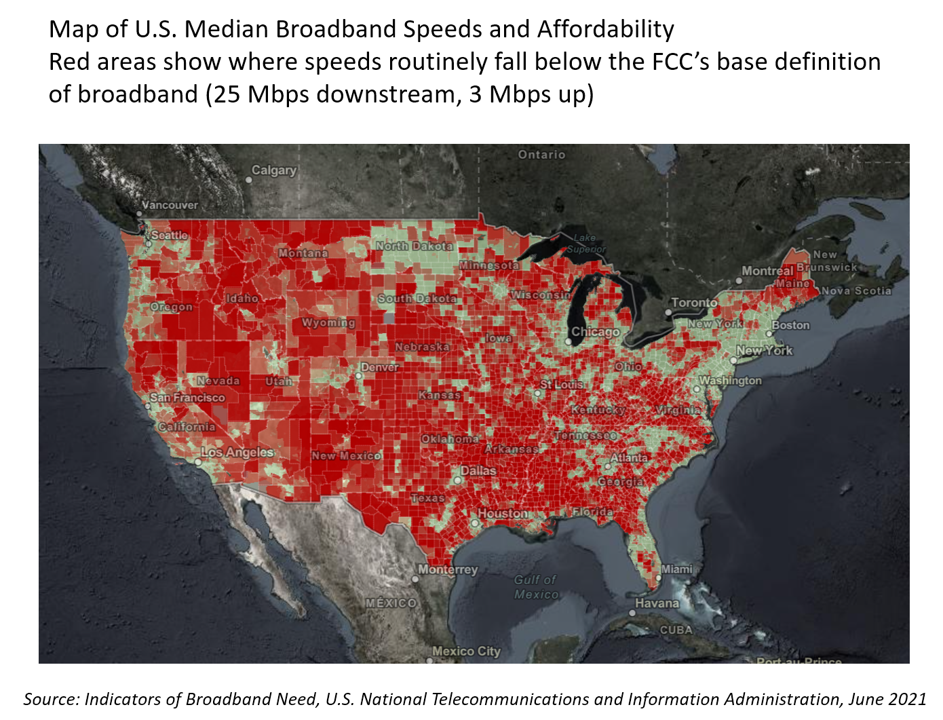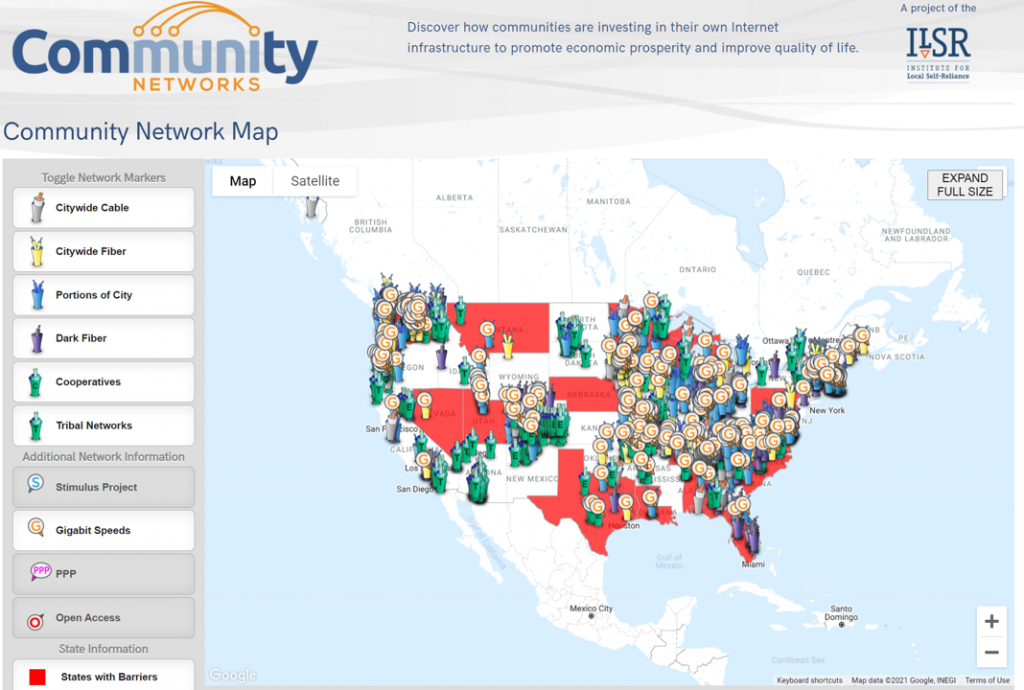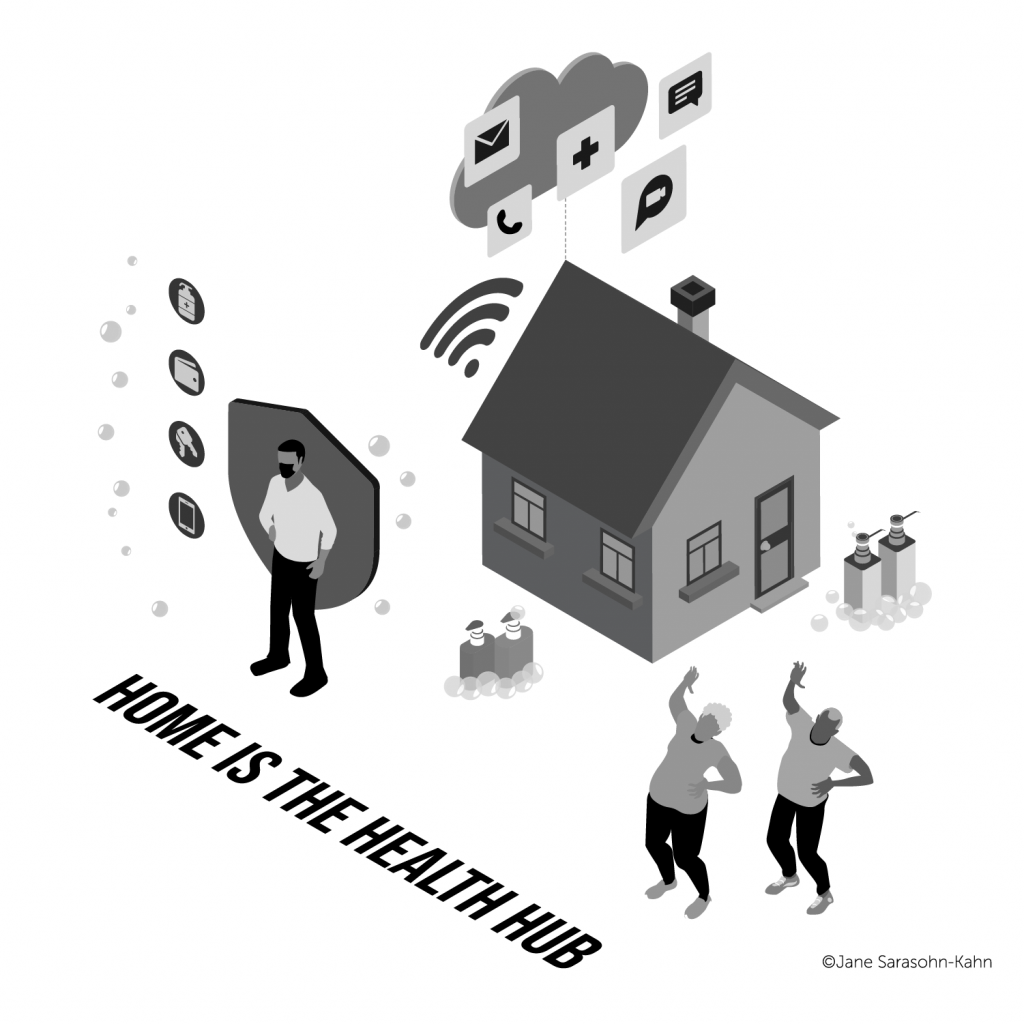“The simple fact is that the federal and state governments are doing almost nothing to help people who have a broadband service available that partially meets their needs but abuses them with regular price hikes, spotty reliability, and poor customer service. Local governments will continue to step in to build better networks because communities have very few other options.”
 That “necessity is the mother” motivation to build broadband comes from Christopher Mitchell, Director of the Community Broadband Networks Initiative at the Institute for Local Self-Reliance (ILSR). [FYI, Mitchell’s Twitter handle is @communitynets].
That “necessity is the mother” motivation to build broadband comes from Christopher Mitchell, Director of the Community Broadband Networks Initiative at the Institute for Local Self-Reliance (ILSR). [FYI, Mitchell’s Twitter handle is @communitynets].
Mitchell is quoted in the story, New data says more communities built their own broadband because of COVID published in Motherboard on 10th September 2021, an important report written by Karl Bode.
Local-borne and -made connectivity can be built on a variety of models, Bode explains, such as a network leveraging a local power utility, a local government-controlled ISP, or built on the back of a local power utility, a local government-run ISP built from scratch, or a locally-owned cooperative.
Among many reasons broadband continues to lag in certain parts of the U.S. is the monopoly power of ISPs: ILSR gauges that 83 million people in the U.S. live under a broadband monopoly, explicitly pointing to Comcast as a prime example of an obstructive force in building out broadband to the last mile and citizen’s home.
 The combination of market failure, lack of political will, and anemic regulations have undermined U.S. Federal-level fixes to the nation-wide connectivity gaps. That’s motivated the rise of community broadband networks, Bode concludes. The result is shown in the U.S. map of median broadband speeds and affordability, where the red areas shown locales where speeds routinely fall below the FCC’s base definition of broadband.
The combination of market failure, lack of political will, and anemic regulations have undermined U.S. Federal-level fixes to the nation-wide connectivity gaps. That’s motivated the rise of community broadband networks, Bode concludes. The result is shown in the U.S. map of median broadband speeds and affordability, where the red areas shown locales where speeds routinely fall below the FCC’s base definition of broadband.
On the can-do side addressing the connectivity chasm has been innovative communities and private sector partners, aligning to build broadband where people live, work, play, pray, learn, and shop.
The second map titled “Community Networks” comes from ILSR’s analysis of the many communities throughout the U.S. who have indeed built up local connections for residents — health citizens, all.
Christopher Mitchell’s ILSR colleague Sean Gonsalves wrote about The Problem(s) of Broadband in America in July 2021; as the FCC’s broadband map illustrates, the problem(s) hit both rural and urban dwellers. And those problems are access, affordability, and adoption, Gonsalves concludes.
 Health Populi’s Hot Points: Karl Bode’s Motherboard article is intensely central to that pesky, contemporary social determinant of health that emerged so visibly in the COVID-19 pandemic: connectivity.
Health Populi’s Hot Points: Karl Bode’s Motherboard article is intensely central to that pesky, contemporary social determinant of health that emerged so visibly in the COVID-19 pandemic: connectivity.
Folks who couldn’t connect couldn’t work from home, go to school from home, connect with fitness and faith communities from home — essentially live in the year 2020 and beyond in a digitally-enabled home, community, society.
This extended to digital health access, from the WHO’s calling the coronavirus a “pandemic” in March 2020, our homes morphed into our health hubs for fitness, wellness, health and medical care.
That necessity of connectivity has been the mother motivating local partners and programs to building networks throughout the U.S. is inspiring. It’s the story of Americans’ entrepreneurial passions, instincts, and Maker spirits.
However, that’s hardly a recipe for a nation’s health equity and inclusion, which underpin risks for more acute care, later diagnoses, and poor prognoses for health outcomes.
Gonsalves concludes his “problem(s)” paper noting that,
“Effective legislative efforts to bridge the digital divide must tackle all three challenges: access, affordability, and adoption. Anything less risks depriving millions of Americans access to equal opportunity in an interconnected global economy.”
And, anything less than a federal/national approach to broadband-for-all also risks depriving millions of U.S. health citizens (both rural and urban dwellers) access to health care delivered virtually, to the home and the hand, and closer-to-home — in the growing omni-channel health delivery ecosystem.
The post Necessity is the Mother(board) – How COVID-19 Inspires Local Communities to Build Broadband appeared first on HealthPopuli.com.
Necessity is the Mother(board) – How COVID-19 Inspires Local Communities to Build Broadband posted first on https://carilloncitydental.blogspot.com
No comments:
Post a Comment